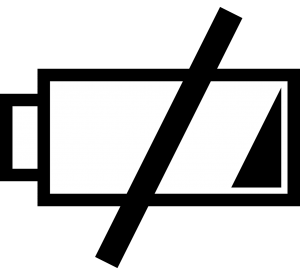When we first heard the tales of people in China being in quarantine for two weeks – and going stir crazy after a couple of days – many pwME (people with Myalgic Encephalomyelitis) were saying (to each other) – “Two weeks is too difficult? They should try x number of years.” A considerable amount of us are mainly housebound or even bedbound, and those of us who live alone effectively spend much of our lives in quarantine.
I have had ME for many years. I’ve always lived alone, but since 2015 I have been living in a house in a rural area. This means there is nowhere for me to go without a car journey (I live six miles from the nearest bus stop), so I don’t get to go very many places. As I receive few visitors, I spend most of my life on my own. There are a lot of us in a similar position, and we have had to develop multiple strategies to cope with the isolation. As a result of this, I believe we have a mental “head start” on the rest of the population in the matter of social distancing.
Whilst it would be nice to think that others will have a better understanding of our situations after this – with less of the “I wish I could spend the day in bed,” “It must be nice to be able to watch Netflix all day,” “I’d love to have the house to myself” type of comments, that’s not what this article is about. Rather, it’s that we have developed coping skills over the years that make us experts in this matter, and we are in a position to advise those to whom this is new and a shock.
Let’s start with social media. To those who argue against it by saying that it cuts down on genuine face-to-face interaction, you have to understand that it can also have the exact opposite effect for those who don’t have the same opportunities as the majority. I sometimes think it would be very difficult to live without Facebook. It keeps me connected to my real-life friends that I rarely, if ever, get to see, but it has also given me a whole new group of friends, many of them connected with my illness. There are numerous supportive chronic illness groups on there, and as some of them are international, you may often find someone to talk to whatever time of the day or night it is where you are. I have made one friend through Facebook with whom I spend literally hours every week talking on Messenger. Other people have similar experiences with Twitter. And then there are places such as The Mighty – massive online communities, ready and waiting to encourage and share experiences with each other.
But it’s not just other ill people. You can join groups with people who share similar interests, whether that be reading, politics, film, or whatever. You can keep up to date with people in your previous profession. You can feel as if you’re not really isolated, as all those people are within reach of your phone, tablet or laptop.
And then there are the non-social ways of keeping yourself occupied and interested. There’s far more than just Netflix and reading! I’ve done many online courses with sites such as FutureLearn, in subjects as diverse as German, creative writing and archaeology. Specialist language sites such as Duolingo can be quite addictive. Not to mention the whole online gaming community.
Got something to say? Start a blog, or write for a site such as Medium or the Huffington Post. Declutter your house, one drawer at a time. Get into cooking. Learn a musical instrument or practice one you already know. Knit. Crochet. Paint. The possibilities are endless. And if you need encouragement or don’t know how to start, just ask one of us chronic illness warriors. We’ll be glad to share our expertise with you!
Mary Tynan
Picture by Bruno Cervera from Unsplash.

